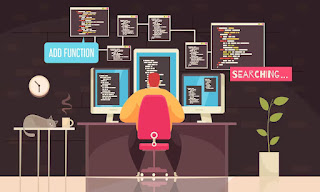Retail Shelf Monitoring: How Computer Vision is Transforming Retail Efficiency
The retail industry thrives on operational efficiency and customer satisfaction. Among the core operations in retail, shelf monitoring plays a critical role. It ensures that shelves are stocked, organized, and visually appealing to customers. However, manual monitoring can be error-prone, time-consuming, and costly. Enter computer vision—a cutting-edge technology that leverages AI to revolutionize retail shelf monitoring. This blog delves into the transformative impact of computer vision in retail shelf monitoring, its applications, and benefits.
The Need for Advanced Shelf Monitoring
In traditional retail setups, shelf monitoring is handled manually by store staff or through routine inspections. This approach is not only labor-intensive but often misses out on identifying issues such as misplaced items, stockouts, or pricing discrepancies in real time.
Some of the common challenges in manual shelf monitoring include:
Stockouts and Overstocks: Inconsistent stock monitoring can lead to lost sales or overstocking, which increases inventory costs.
Pricing Errors: Misplaced price tags or incorrect promotions can confuse customers and reduce trust.
Inefficiency in Replenishment: Without accurate data, restocking is often delayed or inefficient.
Missed Visual Merchandising Opportunities: Poorly arranged shelves may fail to attract customers effectively.
These challenges emphasize the need for a smarter and more efficient system. This is where computer vision steps in, offering unparalleled precision and automation.
How Computer Vision Works in Retail Shelf Monitoring
Computer vision for retail shelf monitoring utilizes machine learning algorithms, deep learning models, and advanced cameras to analyze images and videos of retail shelves. Here's how it works:
Image Capture: Cameras or IoT devices installed in-store capture high-resolution images or video feeds of the shelves.
AI-Powered Analysis: Computer vision algorithms process the visuals to detect product placement, stock levels, pricing information, and shelf compliance.
Real-Time Alerts: The system sends alerts to store managers about stockouts, misplaced products, or discrepancies.
Actionable Insights: The data is integrated into a dashboard that provides actionable insights for optimizing inventory, shelf arrangement, and customer experience.
Applications of Computer Vision in Retail Shelf Monitoring
1. Stock Level Monitoring
Computer vision can identify low stock levels or empty shelves in real time, enabling staff to replenish items before customers notice the gap. This ensures consistent product availability and enhances customer satisfaction.
2. Planogram Compliance
Planograms are detailed diagrams specifying the placement of products on shelves. Computer vision ensures that shelves comply with planograms, detecting misplaced or missing products and improving visual merchandising.
3. Pricing Accuracy
By analyzing price tags and promotional displays, computer vision helps retailers ensure accurate pricing and avoid customer dissatisfaction caused by discrepancies.
4. Shrinkage Prevention
Computer vision can identify patterns of theft or damage, enabling retailers to reduce shrinkage and maintain accurate inventory records.
5. Dynamic Replenishment
Integrating computer vision with inventory management systems enables automatic reordering of products based on real-time demand. This minimizes overstocking and understocking.
6. Customer Behavior Insights
Computer vision tracks customer interactions with shelves, providing insights into buying patterns, popular products, and areas requiring improvement.
Key Benefits of Computer Vision for Retail Shelf Monitoring
1. Enhanced Operational Efficiency
Automating shelf monitoring reduces the burden on staff, allowing them to focus on customer engagement and other critical tasks.
2. Improved Customer Experience
By ensuring well-stocked and organized shelves, computer vision enhances the shopping experience, increasing customer satisfaction and loyalty.
3. Data-Driven Decision Making
Retailers gain valuable insights into inventory trends, customer preferences, and shelf performance, enabling data-driven decisions to optimize operations.
4. Cost Savings
Minimizing manual efforts, reducing stock discrepancies, and preventing shrinkage lead to significant cost savings for retailers.
5. Scalability
Computer vision systems are scalable, making them suitable for small retail stores as well as large supermarkets and global retail chains.
6. Competitive Edge
Adopting computer vision gives retailers a technological edge in a competitive market, improving both efficiency and customer engagement.
Real-World Examples of Computer Vision in Retail
Amazon Go
Amazon's cashier-less stores use computer vision to monitor shelves, track customer purchases, and automate checkout processes.
Walmart
Walmart utilizes shelf-scanning robots equipped with computer vision to identify stockouts and misplaced items.
Unilever and Microsoft Partnership
Unilever partnered with Microsoft to implement computer vision in retail outlets for ensuring shelf compliance and enhancing operational efficiency.
Implementing Computer Vision in Retail: Key Considerations
1. Infrastructure Setup
Retailers need to install high-quality cameras and sensors to capture accurate visuals of shelves.
2. Data Security
As computer vision systems process large volumes of data, ensuring data privacy and security is paramount.
3. Integration with Existing Systems
Computer vision tools should seamlessly integrate with inventory and POS systems for streamlined operations.
4. Vendor Selection
Partnering with a reliable AI development company is essential for implementing robust and scalable computer vision solutions.
Future Trends in Retail Shelf Monitoring with Computer Vision
1. Autonomous Stores
The rise of autonomous stores powered by computer vision will eliminate manual shelf monitoring altogether.
2. AI-Powered Robots
Retailers will increasingly deploy robots with embedded computer vision to navigate aisles and monitor shelves.
3. Personalized Shopping Experiences
Integrating computer vision with customer data will enable personalized product recommendations and promotions.
4. Enhanced Analytics
Future advancements will provide even deeper insights into consumer behavior, enabling hyper-targeted marketing strategies.
Creating an effortless shopping experience with AI
Conventional retail businesses continue to face customer acquisition difficulties. Ensuring an effective shopping experience is important in keeping customers coming back to the retail store. The future of retail shelf monitoring is quite exciting and for retailers, it has become important in improving customer experiences, optimizing inventory management processes and finally amplifying overall sales. Are you on the lookout for uninterrupted stockouts and product unavailability? Nextbrain’s AI Video analytics software is specially designed to cater to the definite requirements of retail industries and others. Our system is designed to enable retailers to streamline operations, reduce costs, and deliver unique customer experiences.
.png)
%20(1).jpg)


Comments
Post a Comment